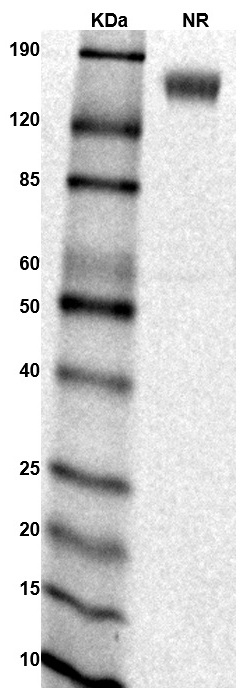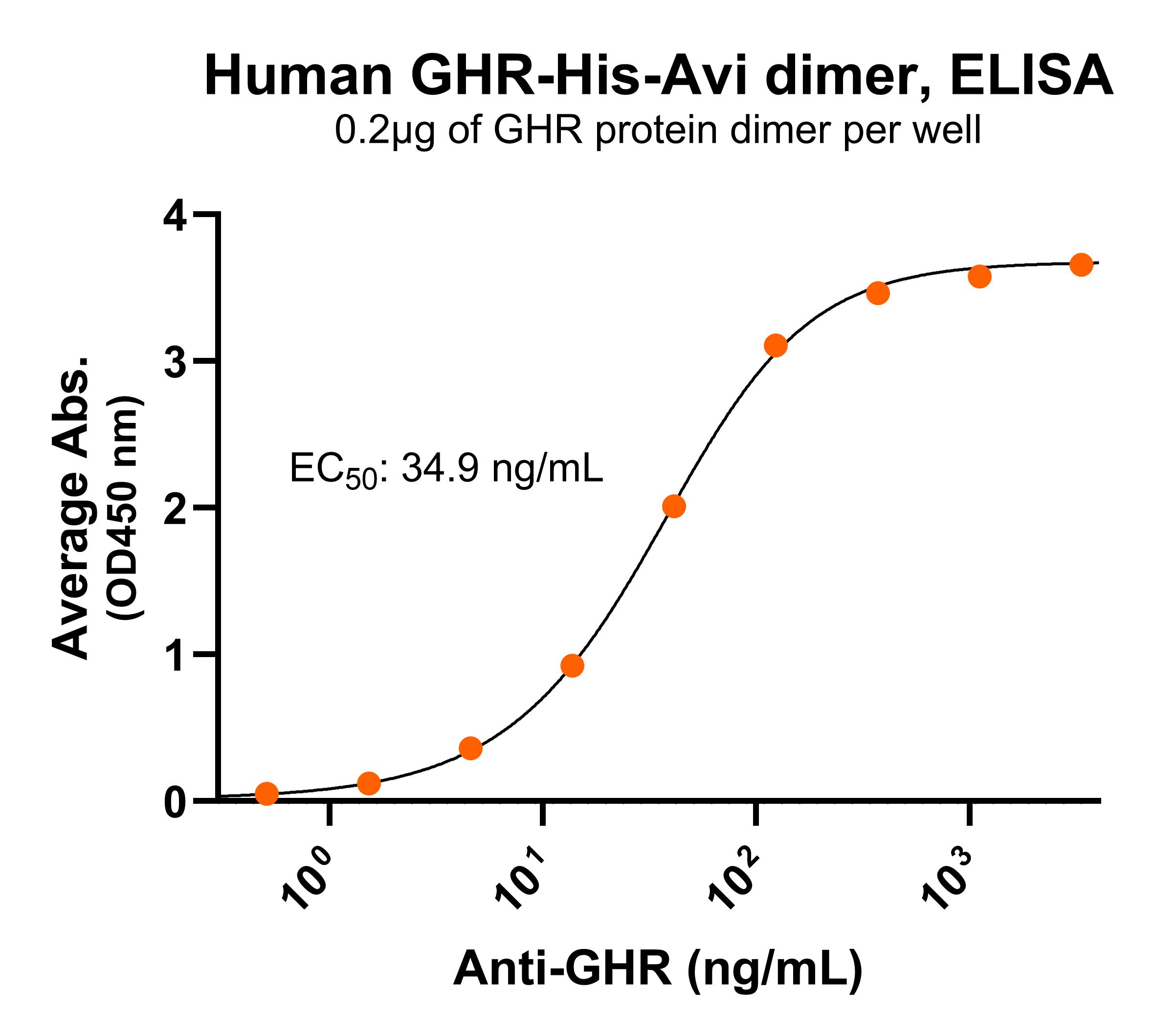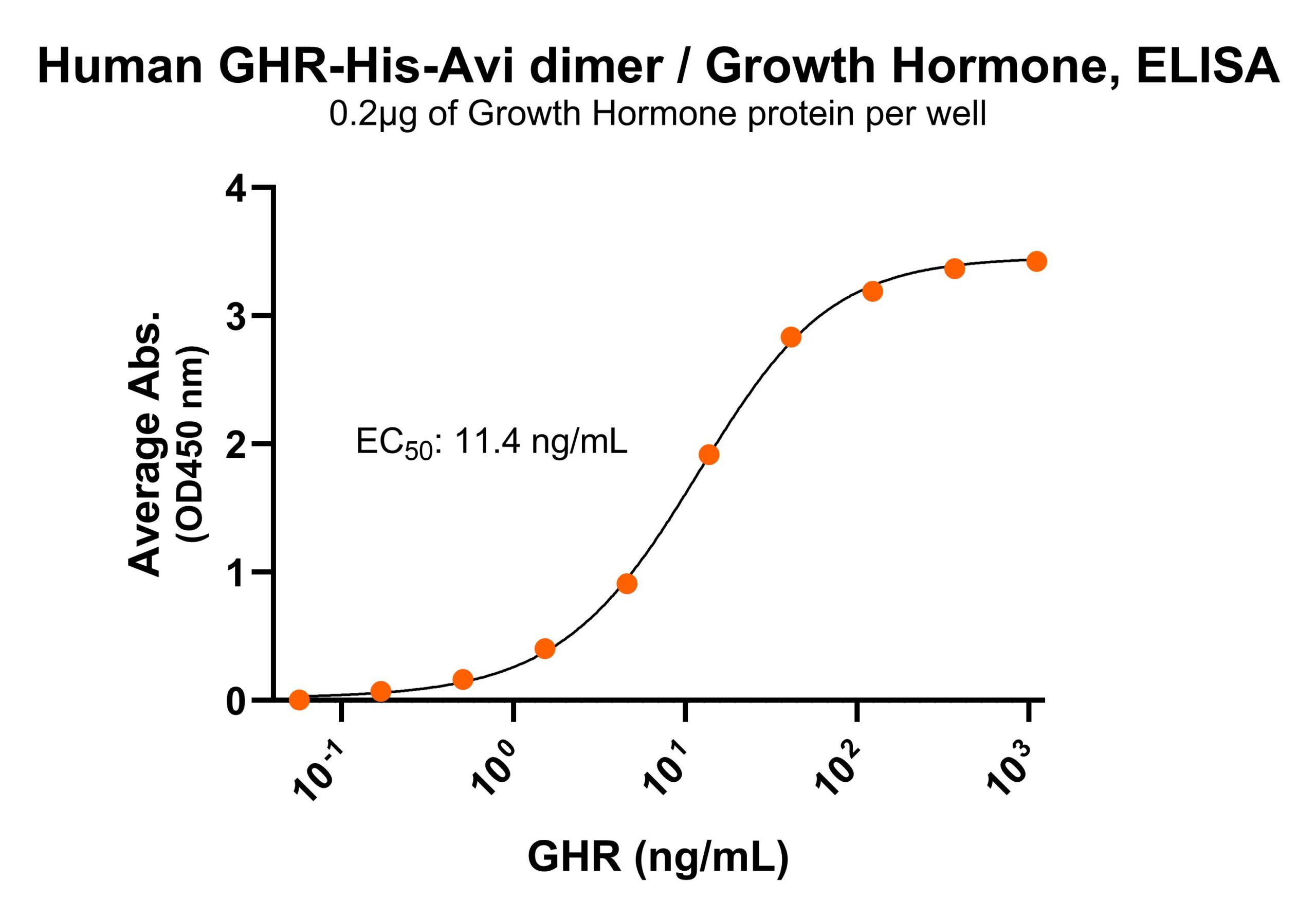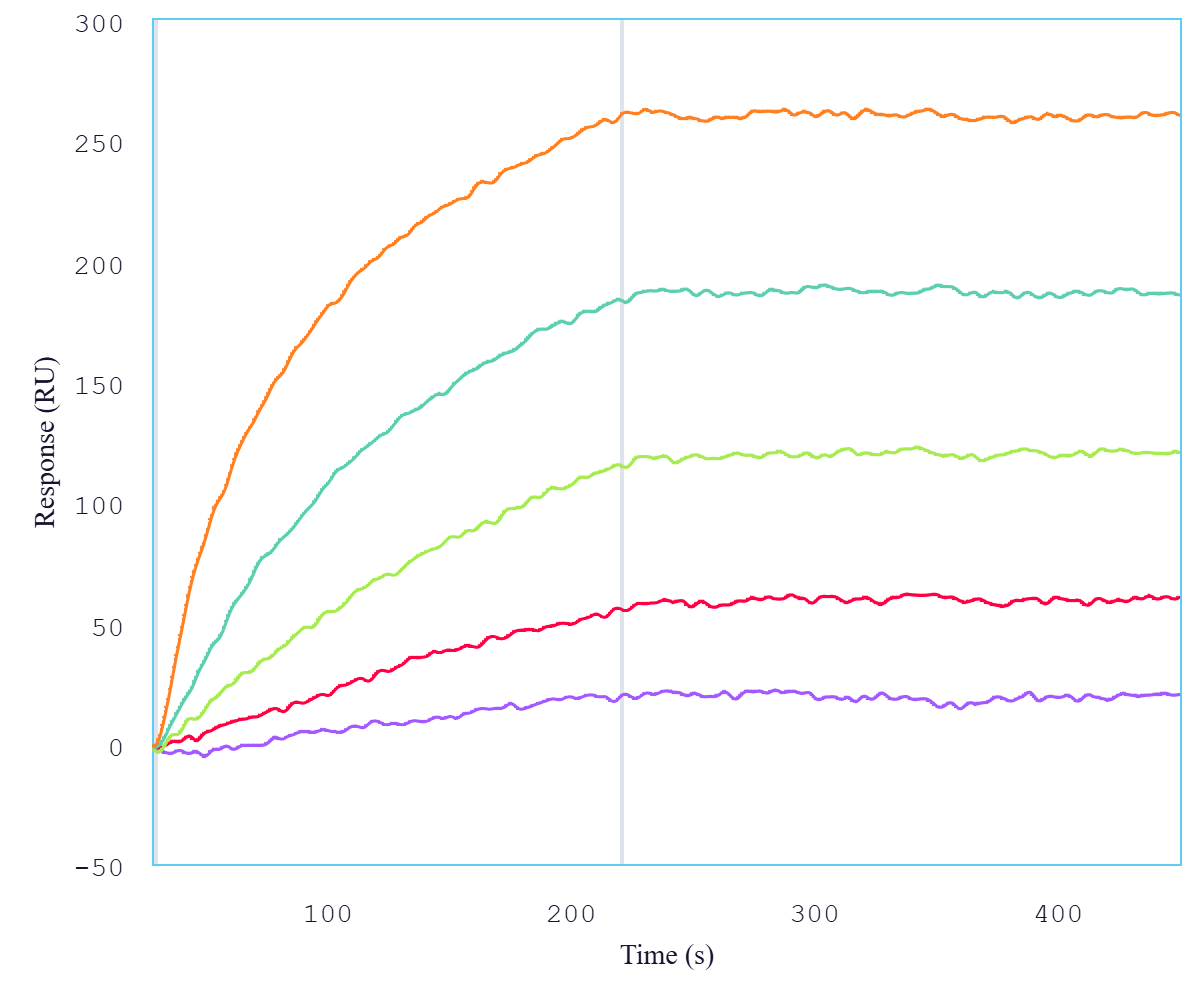 MW: Molecular Weight marker reduced condition
NR: GHR dimer under non-reduced condition
MW: Molecular Weight marker reduced condition
NR: GHR dimer under non-reduced condition Immobilized human GHR protein dimer
Immobilized human GHR protein dimer His Tag (CSP-24088-03) at 2 μg/mL (100 μL/well) can bind anti-human GHR monoclonal antibody with half maximal effective concentration (EC50) range of 17.4-69.8 ng/mL (QC tested).
His Tag (CSP-24088-03) at 2 μg/mL (100 μL/well) can bind anti-human GHR monoclonal antibody with half maximal effective concentration (EC50) range of 17.4-69.8 ng/mL (QC tested). Immobilized human Growth Hormone at 2 μg/mL (100 μL/well) can bind human GHR protein dimer
Immobilized human Growth Hormone at 2 μg/mL (100 μL/well) can bind human GHR protein dimer